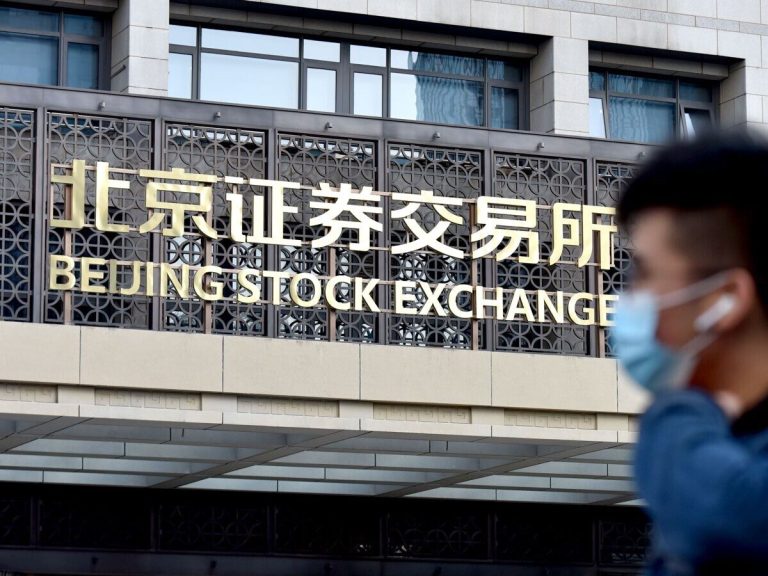The last three weeks haven’t been good ones for markets in Europe, with the FTSE 100 bearing the brunt of recent weakness posting its worst daily run of losses since October last year, as well as revisiting its March lows last week.
The DAX has fared little better, revisiting the lows in July, as weakness in Asia markets, and China especially, pushed the Hang Seng down 5.89% and into bear market territory, as concerns over China’s economy, the solvency of its real estate sector, and any risks of contagion into its financial system.
These concerns were amplified last week after Chinese asset manager Zhonghzi missed a coupon payment, as investors increasingly looked towards possible measures from Chinese authorities to support the economy and their financial system.
Thus far we’ve seen little significant indication of support apart from some modest rate cuts or stimulus at a time when the economy is teetering in deflation, as well as a distinct lack of domestic demand.
This morning China did announce that they were cutting their one-year lending rate by 10bps to 3.45%, however they left their 5-year loan rate unchanged at 4.20%, having cut the medium-term loan rate last week. Unsurprisingly markets were less than impressed by this move, expecting authorities to be much more forceful. This lack of urgency has weighed on Asia markets and is unlikely to spark demand in an economy where loan demand appears to be low anyway.
In the UK, the latest Rightmove House price survey saw asking prices cut by 1.9% in August the biggest decline this year as higher mortgage rates weighed on demand for houses. The prospect of another rate hike next month is also likely to be affecting confidence, although the fact we are in August, and in the middle of the school holidays probably also has a part to play.
US markets, which until recently had proved to be much more resilient have also succumbed to the recent weakness in equity markets, also sliding for the third week in succession, with both the S&P500 and Nasdaq 100 breaking below their respective 50-day SMA’s in a sign that further losses could be on the way.
The weakness in US markets is altogether being driven by a different concern, namely that of higher interest rates for longer as the US economy, which continues to defy expectations of an economic slowdown, sees Fed policymakers push the prospect of more rate hikes in the coming months, pushing up long term yields to multiyear highs in the process, as the prospect of rate cuts gets pushed even further into the future. With that the main investors focus has become less on how high rates might go, and more on how long they will stay there.
This week is likely to see investor attention on the Jackson Hole Symposium where the topic up for discussion is “Structural Shifts in the Global Economy” This will be closely scrutinised for evidence that we might see a rate pause next month when the Federal Reserve next meets to decide on monetary policy.
When Powell spoke last year, he made it plain that there was more pain ahead for US households and that this wouldn’t deter the central bank in acting to bring down inflation, even if it meant pushing unemployment up. His tone this week is unlikely to be anywhere near as hawkish, although he will also be reluctant to declare inflation victory either. It is clear that the Fed believes the fight against inflation is far from over, and in that context it’s unlikely he will deliver any dovish surprises
EUR/USD – still looking soft with the main support area at the 1.0830 area. Still feels range bound with resistance at the 1.1030 area. Below 1.0830 targets the 200-day SMA.
GBP/USD – while above the twin support areas at 1.2610/20 bias remains for a move through the 1.2800 area, and on towards 1.3000. A break below 1.2600 targets 1.2400.
EUR/GBP – finding support for now at the 0.8520/30 area. A move below 0.8500 could see 0.8480. Above the 100-day SMA at 0.8580 targets the 0.8720 area.
USD/JPY – continues to edge higher, towards the 147.50 area. Below the 144.80 area, targets a move back to the 143.10 area.
Disclaimer: CMC Markets is an execution-only service provider. The material (whether or not it states any opinions) is for general information purposes only, and does not take into account your personal circumstances or objectives. Nothing in this material is (or should be considered to be) financial, investment or other advice on which reliance should be placed. No opinion given in the material constitutes a recommendation by CMC Markets or the author that any particular investment, security, transaction or investment strategy is suitable for any specific person. The material has not been prepared in accordance with legal requirements designed to promote the independence of investment research. Although we are not specifically prevented from dealing before providing this material, we do not seek to take advantage of the material prior to its dissemination.

